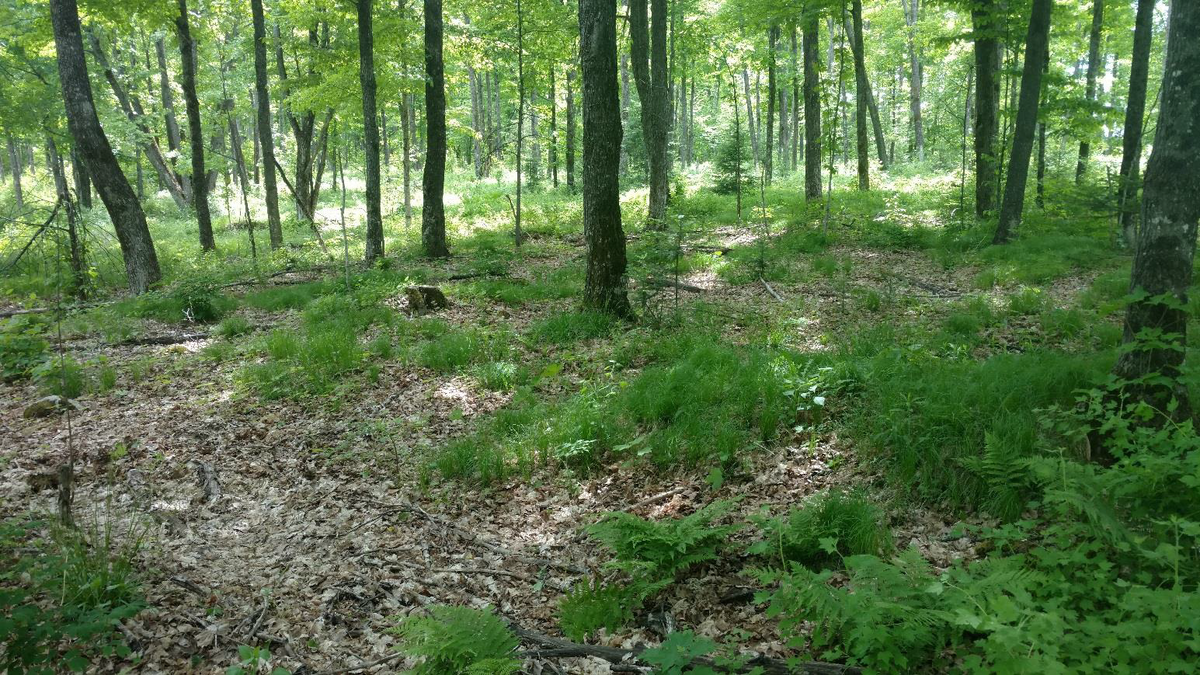Overview
Pennsylvania sedge (Carex pensylvanica) and ironwood (Ostrya virginiana) are present and limiting the regeneration of desired northern harwood species, bringing the future of the stand's northern hardwood covertype classification into doubt. This case study outlines a treatment that is the culmination of two years of trials involving the use of herbicide in managing for competing vegetation. The most effective herbicide application method, and the subject of this case study, was found to be a tank mix of Garlon XTR, Oust and Accord to control a broad spectrum of unwanted plant species. The best sugar maple seedling establishment occurred when the herbicide application coincided with a good seed crop. However, the stand level application used in this treatment is not believed to be as efficient as targeting canopy gaps, groups, or patches in order to promote regeneration establishment.
Silviculture Objective(s)
1. Temporarily eliminate Pennsylvania sedge and other unwanted herbaceous and woody plants that inhibit the establishment of northern hardwood regeneration.
2. Establish sugar maple regeneration from natural seeding.
3. Gain a better understanding of what types of treatments facilitate efficient and effective control.
4. Gain a better understanding of the types of chemicals, rates of application and timing of application for efficient and effective control.
Pre-treatment stand description and condition
Stand establishment and management history:
This stand was harvested in the summer of 2012 using a cut to length harvester/forwarder. This was a single tree selection harvest w/ 30-60’ canopy gaps on +/- 10% of the stand area. Basal area before harvest was 128 ft2/ac and residual stand basal area was 97ft2/ac. In the fixed plots established for this trial basal area was measured to be 82ft2/ac.
Pre-treatment species composition:
Table 1: Overstory species composition for stand 53-4 as a percentage of the whole.
| Species | Percent |
| sugar maple | 65 |
| basswood | 29 |
| ash, yellow birch, red maple | 6 |
Table 2: Pre-treatment regeneration, recorded in 1/100th acre regeneration plots. Regeneration refers to everything less than 5" DBH.
| Tree Species | Regen/Acre |
| sugar maple | 560 |
| ironwood | 460 |
| basswood | 320 |
| black cherry | 520 |
| red maple | 0 |
| balsam fir | 140 |
| white spruce | 20 |
| red oak | 20 |
| white ash | 200 |
| white birch | 0 |
| Total Stems/Acre | 2240 |
Pre-treatment growth and stocking:
Table 3: Diameter distribution for the stand. The average DBH is 13".
| Size Class | DBH Range (in) | Basal Area (ft2/acre) |
| pole | 5-11 | 24.5 |
| small saw | 10-14 | 63 |
| medium saw | 15-20 | 9.5 |
| large saw | 20+ | 0 |
Pre-treatment forest health issues:
Pennsylvania sedge and ironwood are limiting northern hardwoods regeneration.
Silviculture Prescription
Stand level application with skidder & spray tank (2013):
1. Herbicide application: use a skidder mounted herbicide sprayer to treat +/-40 acres of stand with heavy ground layer of Pennsylvania sedge and ironwood.
2. Treat site with Garlon XRT (1.5qt/ac) Accord XRT(2.05qt/ac) and Oust (1.03oz/ac).
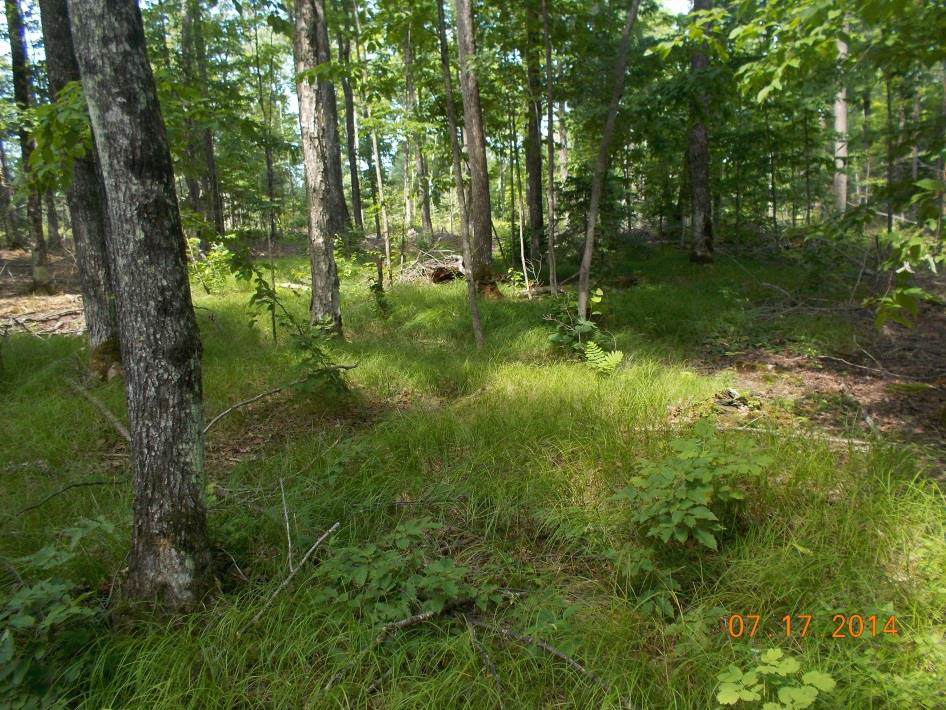
Figure 1: Before stand level treatment, which was carried out with a skidder and spray tank in 2013.
What actually happened during the treatment
Stand level application with skidder & spray tank (2013):
1. Herbicide application August 6th 2013: Used skidder mounted herbicide sprayer to treat +/-40 acres of stand with heavy ground layer of Pennsylvania sedge and ironwood. Other species such as ferns & Rubus spp. also present.
2. Treated site with Garlon XRT (1.5qt/ac) Accord XRT(2.05qt/ac) and Oust (1.03oz/ac). 5 test plots and 2 control plots were established and inventoried to measure composition and abundance of tree/shrub species and percent sedge cover prior to application. Plots are 1/100th acre and are permanently marked with a metal rod plot center and GPS. Application was timed to correspond to a good seed year. Monitoring will be completed for several springs and falls to determine success.
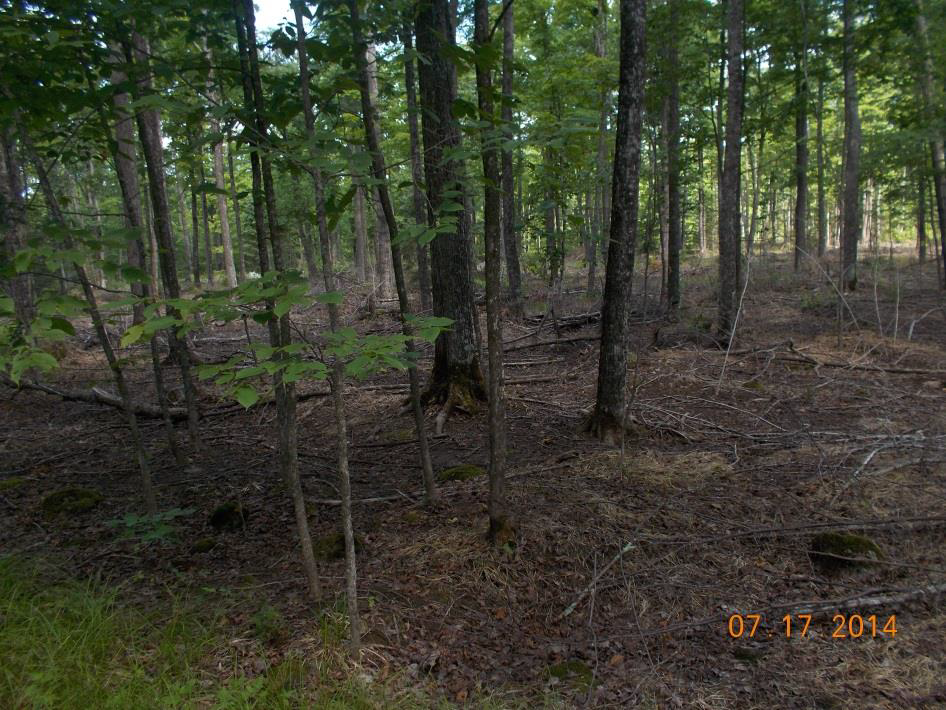
Figure 2: After stand level treatment, which was carried out with a skidder and spray tank in 2013.
The tractor sprayer used (see figure 3) has a 150 gallon tank, driven by a P.T.O., and could apply herbicide via a boom or 100 foot hose reel. The boom is 12 feet with five nozzles and when fully raised can cover roughly 20 feet. Spray from the hose reel can reach an additional 20-30 feet beyond the 100 foot hose.
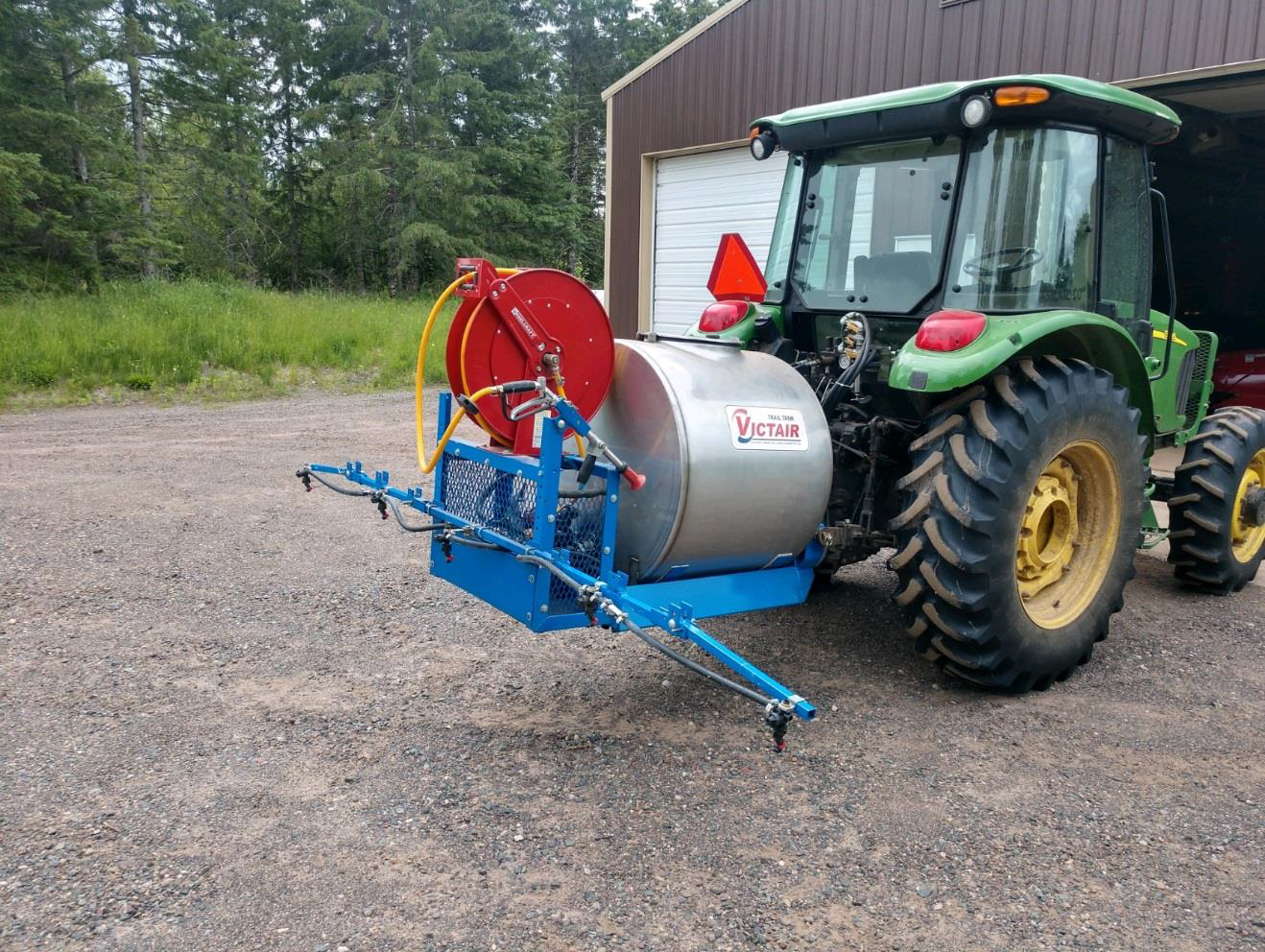
Figure 3: Tractor sprayer with 150 gallon tank, P.T.O. driven. Boom is 12 feet with 5 nozzles and when fully raised can cover about 20 feet.
Post-treatment assessment
Table 4: Post-treatment regeneration in the spring of 2014, recorded in 1/100th acre regeneration plots. Regeneration refers to everything less than 5" DBH.
| Tree Species | Regen/Acre |
| sugar maple | 2080 |
| ironwood | 220 |
| basswood | 160 |
| cherry | 60 |
| red maple | 0 |
| balsam fir | 120 |
| white spruce | 20 |
| red oak | 0 |
| white ash | 0 |
| white birch | 0 |
| Total Stems/Acre | 2660 |
Table 5: Post-treatment regeneration in the fall of 2014, recorded in 1/100th acre regeneration plots.
| Tree Species | Regen/Acre |
| sugar maple | 4800 |
| ironwood | 1000 |
| basswood | 320 |
| cherry | 460 |
| red maple | 1080 |
| balsam fir | 300 |
| white spruce | 20 |
| red oak | 0 |
| white ash | 400 |
| white birch | 20 |
| Total Stems/Acre | 8400 |
Table 6: Post-treatment regeneration in 2019, recorded in 1/100th acre regeneration plots.
| Tree Species | Regen/Acre |
| sugar maple | 13380 |
| ironwood | 340 |
| basswood | 600 |
| cherry | 380 |
| red maple | 720 |
| balsam fir | 650 |
| white spruce | 20 |
| red oak | 0 |
| white ash | 0 |
| white birch | 0 |
| Total Stems/Acre | 16090 |
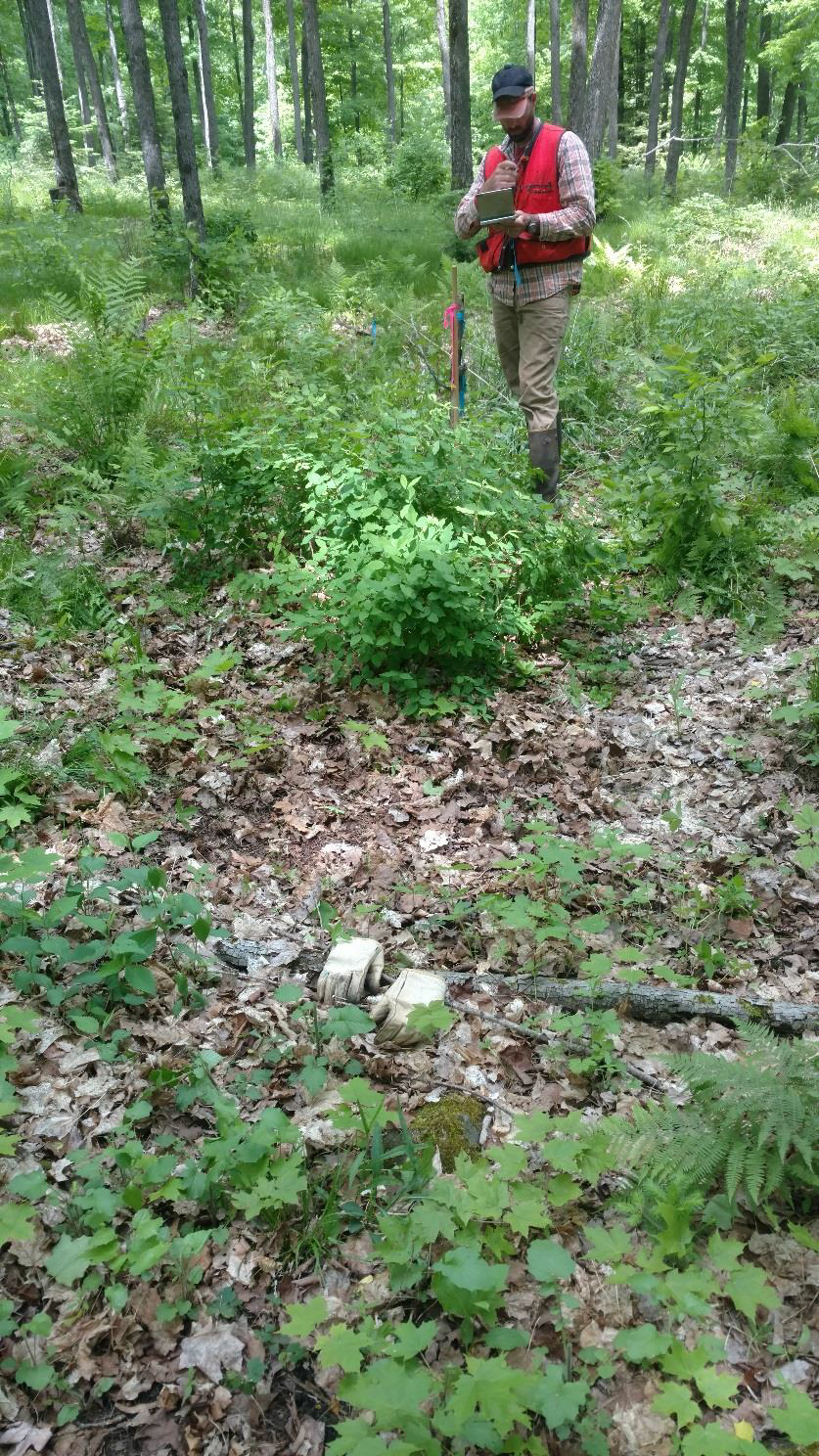
Figure 4: Fixed 1/100th acre plot within the stand level application area featuring roughly 37,000 sugar maple seedlings per acre.
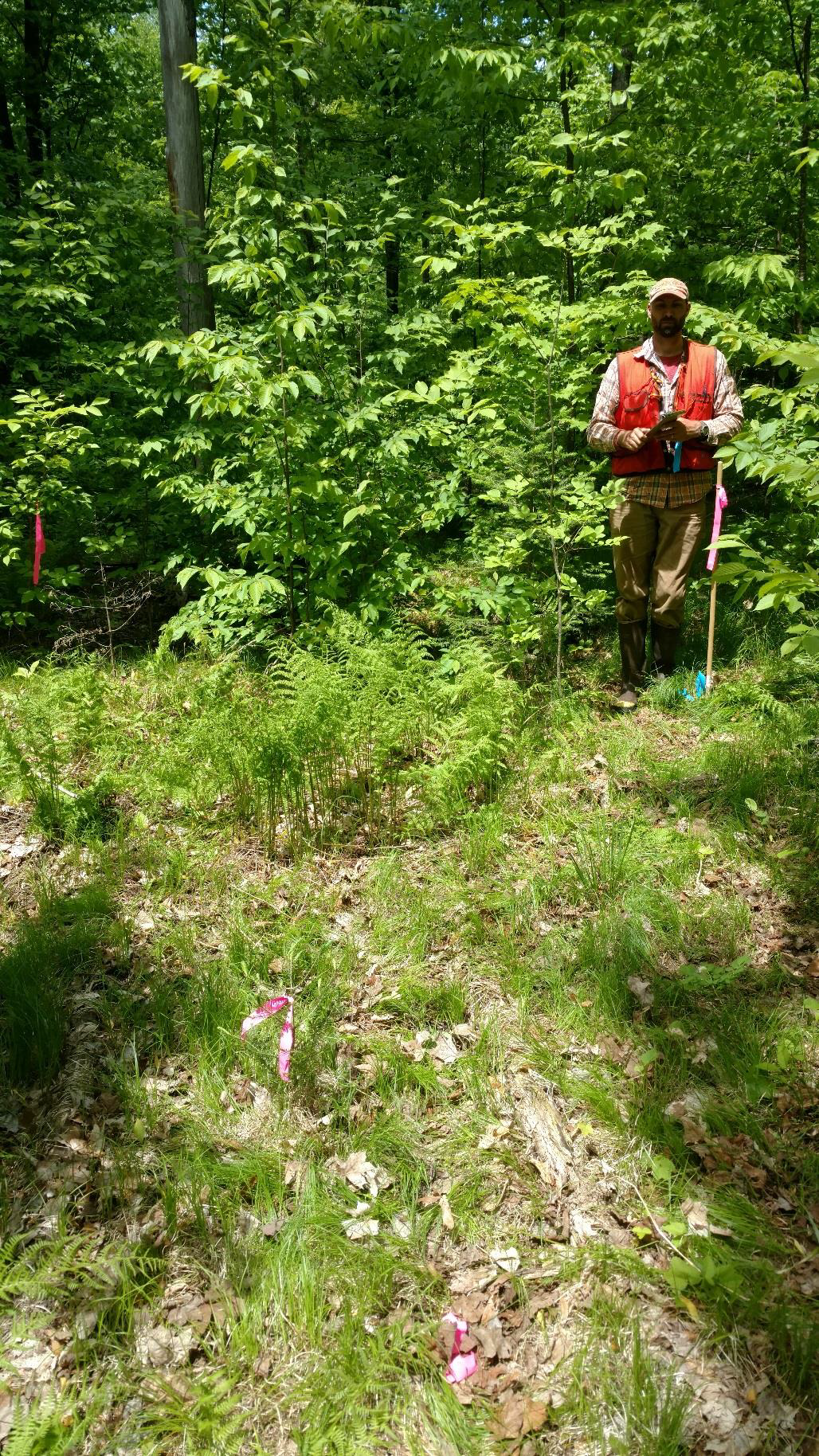
Figure 5: Untreated control plot in 2019.
Plans for future treatments
This stand is scheduled for a selection harvest in 2020 but is likely not going to be ready by then. However, the selection harvest will definitely occur in the next 10 years.
Monitoring will continue in subsequent springs and falls to determine the success of this treatment.
Costs and economic considerations
The stand-level skidder application with Garlon/Accord/Oust is about $125 per acre. This price fluctuates somewhat due to fuel prices and herbicide costs.
Other notes
This case study was developed with support from the United States Department of Agriculture's National Institute for Food and Agriculture (USDA-NIFA), Renewable Resources Extension Act (RREA). Project #MIN-44-E02, principal investigator Eli Sagor, University of Minnesota.
Summary / lessons learned / additional thoughts
• The most effective herbicide application was a tank mix of Garlon XTR, Oust and Accord to control a broad spectrum of unwanted plant species.
• The best sugar maple seedling establishment occurred when the herbicide application coincided with a good seed crop.
• Sites selected for application need to be thoroughly monitored prior to application to ensure that regeneration is not establishing on its own. Preferably late spring early summer or during leaf color change in fall in first 1-3 years after harvest.
• Sugar maple seedlings will establish in the treated areas immediately following snow melt in the spring.
• Newly established seedlings are very susceptible to moisture stress after germination.
• Stand level application probably not the best method. Better to focus on canopy gaps, groups or patches.
• Stand level application resulted in minor ground surface erosion in areas with minor slopes.
• Stand level application allowed hemp nettle & Canada thistle to establish in treated area after second year. At year five they were much less abundant than year two.
• Oust Considerations - Between fall 2014 & spring 2019 a decline in ironwood, black cherry, ash and red maple seedlings occurred. Other than casual observations the stand was not inventoried 2015-2018. This period of time saw average to above average precipitation so moisture stress is unlikely. It was also observed in 2019 that most hard maple seedlings were much smaller than expected and appeared to be only 2 years old. It is suspected that the pre-emergent activity of Oust may have contributed to some seedling mortality while it remained active in the soil. Rich Ludholz, Ludholz North Star Acres Tree Nursery has had similar issues with failure of nursery stock after seed beds were treated with Oust in the prior year(s). The length of time Oust will remain active in the soil will depend on soil characteristics, environmental factors, weed size/intensity and application rate. While it is suspected that Oust may have contributed to some seedling loss, the use of it did not prevent adequate regeneration from establishing, but perhaps delayed it an additional 2-3 years from the application date, while at the same time controlling sedge and ironwood for 2-3 years.
• From 2014-2019 canopy closure was 13% whereas plot basal area only changed 2.4% (2sqft/ac).
• Sedge is a player in regeneration. Other factors are less apparent but appear to be very significant contributors to a sedge / regen problem, including soil moisture, seed production, timing of harvest, herbivory, canopy closure, earth worms, aspect, and tree ages.
Submitted by
Lane Moser
Lane got his passion for silviculture over the course of achieving his B.S. and M.S. in forestry from the University of Minnesota. He has worked at the Sustainable Forests Education Cooperative since early 2022. Lane is also currently pursuing a PhD at the University of Minnesota; his specialization and research interests include both silviculture and soil health and structure, particularly as they relate to the aspen cover type.
